Saaketh Desai
Accelerating Materials Design via LLM-Guided Evolutionary Search
Oct 26, 2025Abstract:Materials discovery requires navigating vast chemical and structural spaces while satisfying multiple, often conflicting, objectives. We present LLM-guided Evolution for MAterials design (LLEMA), a unified framework that couples the scientific knowledge embedded in large language models with chemistry-informed evolutionary rules and memory-based refinement. At each iteration, an LLM proposes crystallographically specified candidates under explicit property constraints; a surrogate-augmented oracle estimates physicochemical properties; and a multi-objective scorer updates success/failure memories to guide subsequent generations. Evaluated on 14 realistic tasks spanning electronics, energy, coatings, optics, and aerospace, LLEMA discovers candidates that are chemically plausible, thermodynamically stable, and property-aligned, achieving higher hit-rates and stronger Pareto fronts than generative and LLM-only baselines. Ablation studies confirm the importance of rule-guided generation, memory-based refinement, and surrogate prediction. By enforcing synthesizability and multi-objective trade-offs, LLEMA delivers a principled pathway to accelerate practical materials discovery. Code: https://github.com/scientific-discovery/LLEMA
AutoSciLab: A Self-Driving Laboratory For Interpretable Scientific Discovery
Dec 16, 2024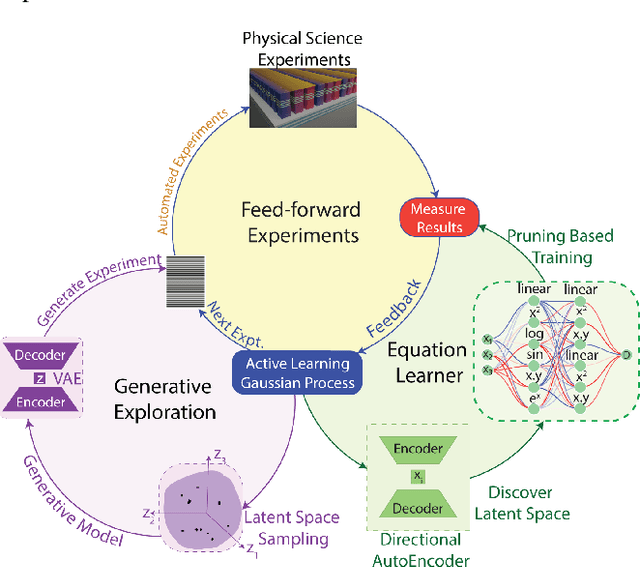
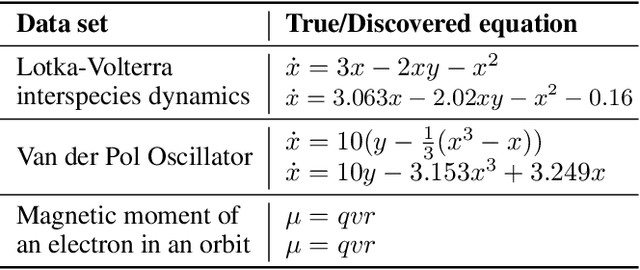
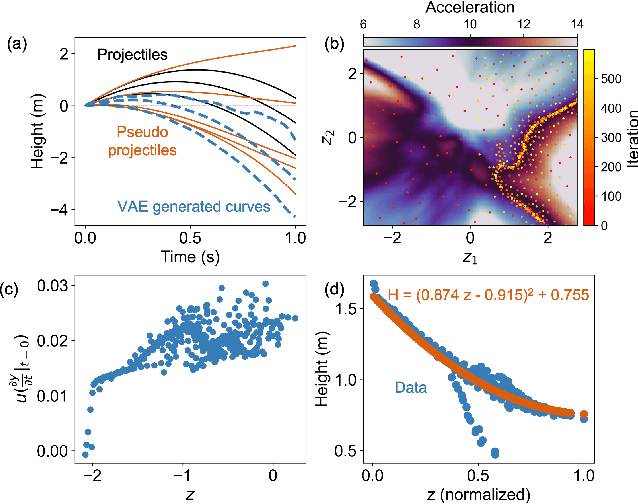
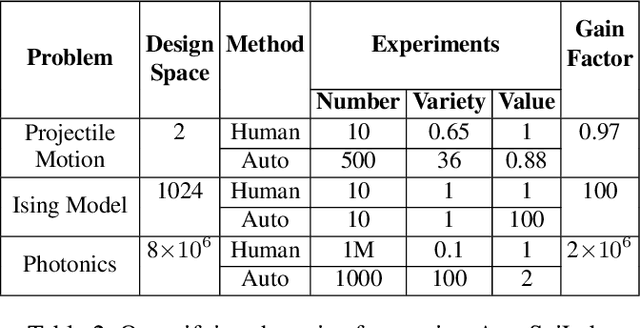
Abstract:Advances in robotic control and sensing have propelled the rise of automated scientific laboratories capable of high-throughput experiments. However, automated scientific laboratories are currently limited by human intuition in their ability to efficiently design and interpret experiments in high-dimensional spaces, throttling scientific discovery. We present AutoSciLab, a machine learning framework for driving autonomous scientific experiments, forming a surrogate researcher purposed for scientific discovery in high-dimensional spaces. AutoSciLab autonomously follows the scientific method in four steps: (i) generating high-dimensional experiments (x \in R^D) using a variational autoencoder (ii) selecting optimal experiments by forming hypotheses using active learning (iii) distilling the experimental results to discover relevant low-dimensional latent variables (z \in R^d, with d << D) with a 'directional autoencoder' and (iv) learning a human interpretable equation connecting the discovered latent variables with a quantity of interest (y = f(z)), using a neural network equation learner. We validate the generalizability of AutoSciLab by rediscovering a) the principles of projectile motion and b) the phase transitions within the spin-states of the Ising model (NP-hard problem). Applying our framework to an open-ended nanophotonics challenge, AutoSciLab uncovers a fundamentally novel method for directing incoherent light emission that surpasses the current state-of-the-art (Iyer et al. 2023b, 2020).
Self-driving lab discovers principles for steering spontaneous emission
Jul 24, 2024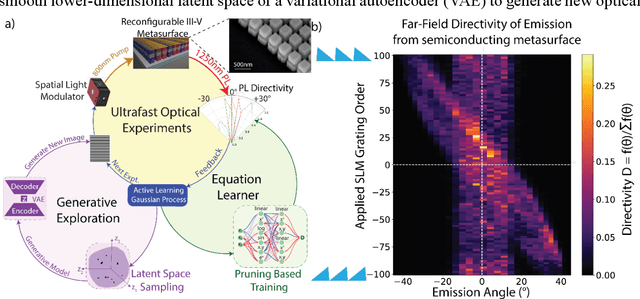
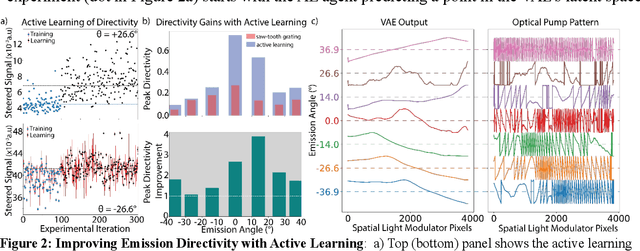
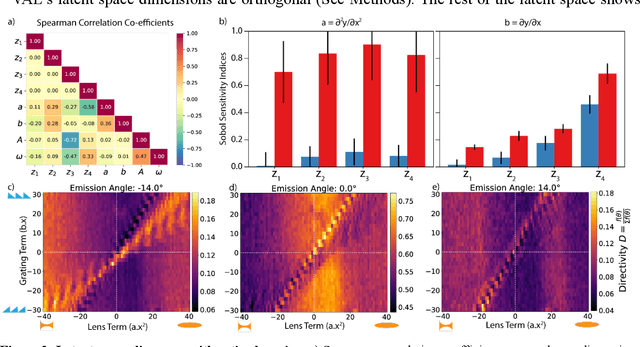
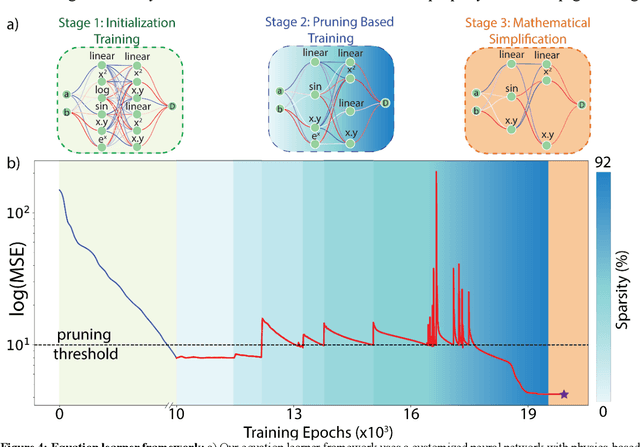
Abstract:We developed an autonomous experimentation platform to accelerate interpretable scientific discovery in ultrafast nanophotonics, targeting a novel method to steer spontaneous emission from reconfigurable semiconductor metasurfaces. Controlling spontaneous emission is crucial for clean-energy solutions in illumination, thermal radiation engineering, and remote sensing. Despite the potential of reconfigurable semiconductor metasurfaces with embedded sources for spatiotemporal control, achieving arbitrary far-field control remains challenging. Here, we present a self-driving lab (SDL) platform that addresses this challenge by discovering the governing equations for predicting the far-field emission profile from light-emitting metasurfaces. We discover that both the spatial gradient (grating-like) and the curvature (lens-like) of the local refractive index are key factors in steering spontaneous emission. The SDL employs a machine-learning framework comprising: (1) a variational autoencoder for generating complex spatial refractive index profiles, (2) an active learning agent for guiding experiments with real-time closed-loop feedback, and (3) a neural network-based equation learner to uncover structure-property relationships. The SDL demonstrated a four-fold enhancement in peak emission directivity (up to 77%) over a 72{\deg} field of view within ~300 experiments. Our findings reveal that combinations of positive gratings and lenses are as effective as negative lenses and gratings for all emission angles, offering a novel strategy for controlling spontaneous emission beyond conventional Fourier optics.
Rethinking materials simulations: Blending direct numerical simulations with neural operators
Dec 08, 2023Abstract:Direct numerical simulations (DNS) are accurate but computationally expensive for predicting materials evolution across timescales, due to the complexity of the underlying evolution equations, the nature of multiscale spatio-temporal interactions, and the need to reach long-time integration. We develop a new method that blends numerical solvers with neural operators to accelerate such simulations. This methodology is based on the integration of a community numerical solver with a U-Net neural operator, enhanced by a temporal-conditioning mechanism that enables accurate extrapolation and efficient time-to-solution predictions of the dynamics. We demonstrate the effectiveness of this framework on simulations of microstructure evolution during physical vapor deposition modeled via the phase-field method. Such simulations exhibit high spatial gradients due to the co-evolution of different material phases with simultaneous slow and fast materials dynamics. We establish accurate extrapolation of the coupled solver with up to 16.5$\times$ speed-up compared to DNS. This methodology is generalizable to a broad range of evolutionary models, from solid mechanics, to fluid dynamics, geophysics, climate, and more.
Parsimonious neural networks learn classical mechanics and can teach it
May 08, 2020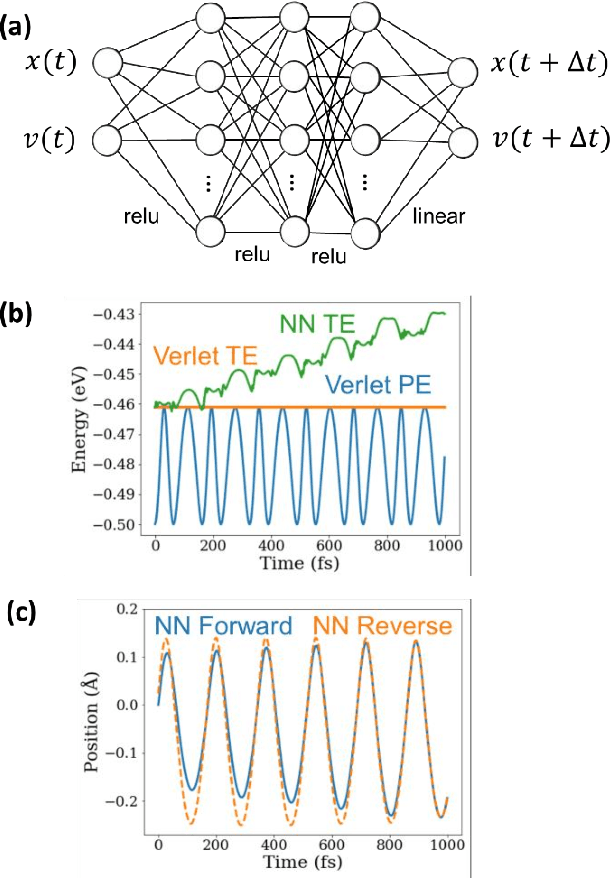
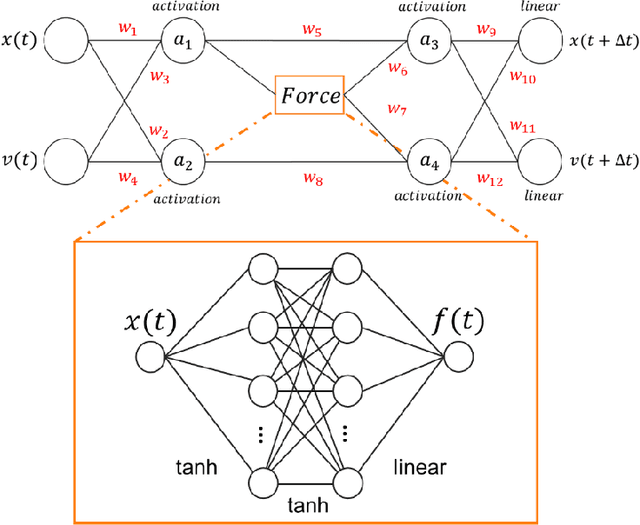
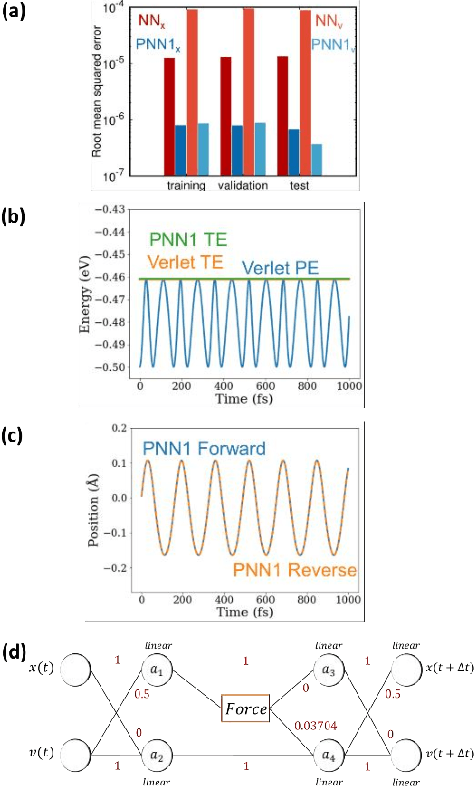
Abstract:We combine neural networks with genetic algorithms to find parsimonious models that describe the time evolution of a point particle subjected to an external potential. The genetic algorithm is designed to find the simplest, most interpretable network compatible with the training data. The parsimonious neural network (PNN) can numerically integrate classical equations of motion with negligible energy drifts and good time reversibility, significantly outperforming a generic feed-forward neural network. Our PNN is immediately interpretable as the position Verlet algorithm, a non-trivial integrator whose justification originates from Trotter's theorem.
 Add to Chrome
Add to Chrome Add to Firefox
Add to Firefox Add to Edge
Add to Edge